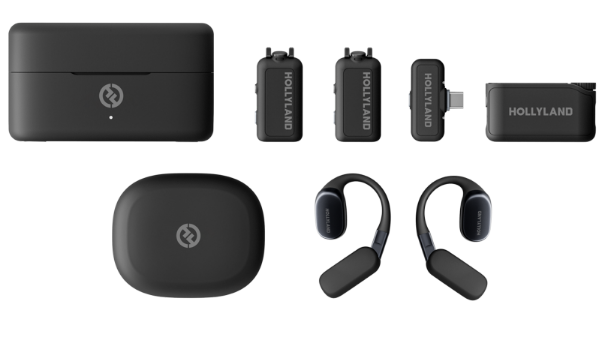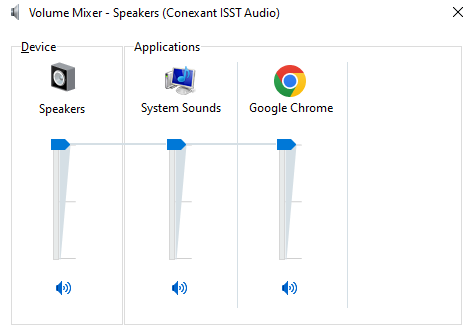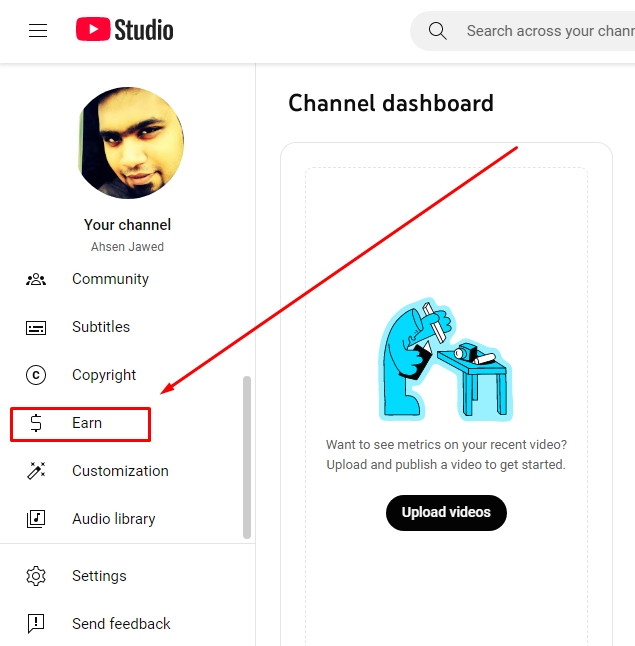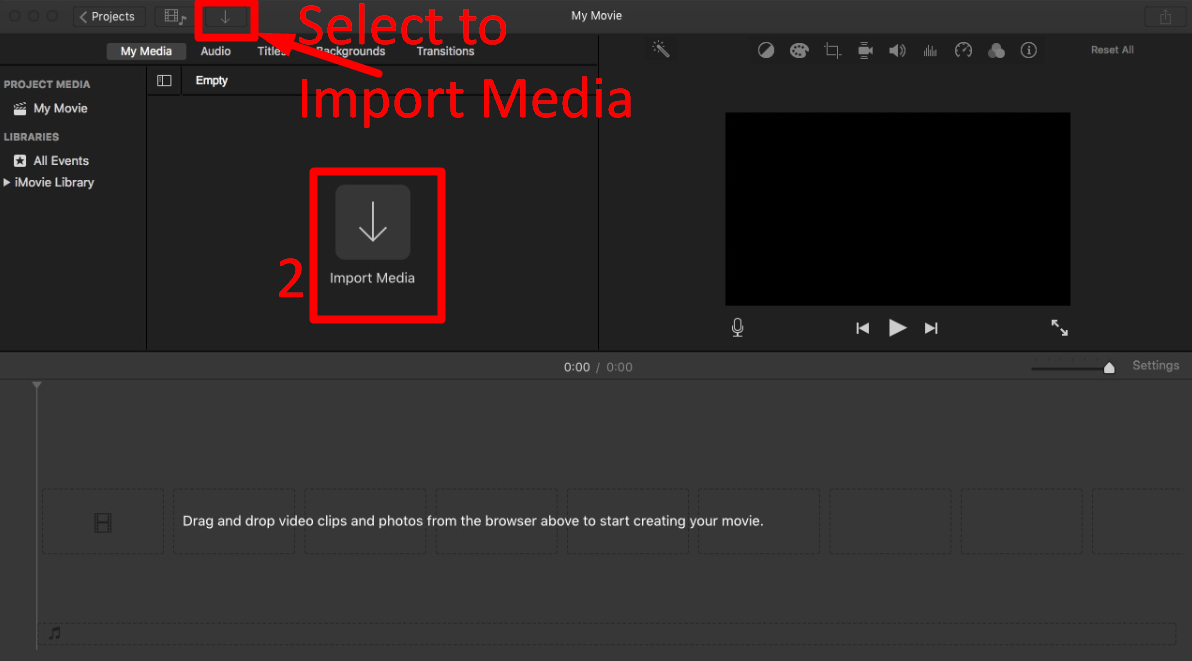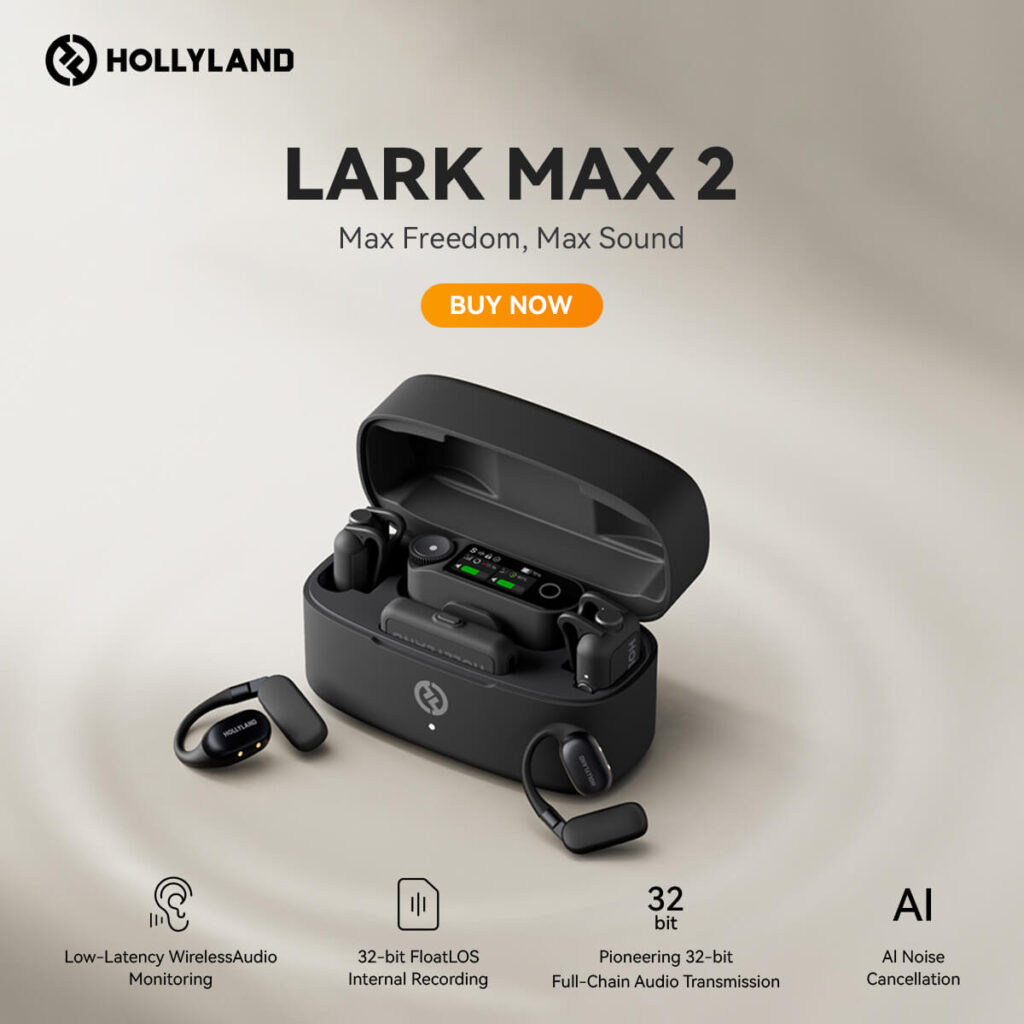YouTube’s algorithm considers factors like watch time, engagement, and video quality when determining how to distribute ads and monetize content.
Do you think you can get engagement and achieve a good watch time with poor sound quality video?
Definitely, the answer is NO! A BIG NO!…
With high-definition videos, your viewers expect to have high-quality sound, too. Actually, viewers are indeed more forgiving of lower video quality than they are of poor audio quality.
This is where a clear and crisp sound can set you apart in an over-saturated market, transforming casual viewers into loyal subscribers.
Whether you’re a seasoned YouTuber or just dipping your toes into the vast ocean of video content, the quality of your audio is paramount. One of the foremost tools ensuring impeccable audio quality is a trusty microphone. And this brings you to selecting a perfect microphone that can take your content to the next level without breaking the bank. Right?
With an array of choices becoming overwhelming, selecting the right microphone is crucial. Dive into this article as we unveil the 14 best YouTube microphones in 2024, ensuring your voice is heard loud, clear, and with unmatched quality.
14 Best Microphones For YouTube 2024: A Quick Comparison
| Microphone Model | Type | Price | Frequency Response | Polar Pattern | Connector | Sample rate & bit-depth | Max SPL |
| Hollyland Lark M2 | Wireless Clip-On | $179.00 | 20Hz-20kHz | Omnidirectional | 3.5mm TRS, USB-C, and Lightning | 48kHz/24-bit | 115dB |
| Hollyland Lark M1 | Wireless Clip-On | $109.00 | 20Hz-20kHz | Omnidirectional | TRS (3.5mm) to TRS, TRS to USB-C, TRS to Lightning, and TRS to TRRS | 48kHz/16-bit | 110dB |
| Hollyland Lark Max | Wireless Clip-On | $249.00 | 20Hz-20kHz | Omnidirectional | USB Audio Class, USB-C, and 3.5mm TRS | 48kHz/24-bit | 120dB |
| Shure MV7+ (5th Generation) | Dynamic (moving coil) | $279.00 | 50Hz-16kHz | Unidirectional (Cardioid) | XLR and USB-C | 44.1-48kHz/16-bit or 24-bit | 128dB |
| RODE NT1 5th Generation | Condenser | $249.00 | 20Hz-20kHz | Cardioid | 3-pin XLR and USB-C (Digital) | 48kHz, 96kHz, 192kHz/24-bit or 32-bit floating point | 142dB |
| Logitech G Yeti GX | Dynamic | $99.99 | 60Hz-18.5kHz | Supercardioid | USB-C to USB-A | 96kHz/24-bit | 135dB |
| Logitech G Blue Yeti Nano | Condenser | $59.11 | 20Hz – 20kHz | Cardioid and Omnidirectional | USB | 48kHz/24-bit | 120dB |
| Audio-Technica AT2035 | Condenser | $149.00 | 20Hz – 20kHz | Cardioid | 3-pin XLRM-type | Unspecified | 148dB and 158dB with 10dB pad |
| Snowball iCE | Condenser | $34.99 | 40Hz – 18kHz | Cardioid | USB | 44.1kHz/16-bit | Unspecified |
| Logitech Blue Yeti USB | Condenser | $129.00 | 20Hz – 20kHz | Omnidirectional, Stereo, Cardioid, and Bidirectional | USB | 48kHz/16-bit | 120dB |
| RODE VideoMic Pro+ | Condenser | $299.00 | 20Hz – 20kHz and 75Hz – 15kHz with high-pass filter | Supercardioid | 3.5mm TRS/minijack | Unspecified | 133dB |
| Shure SM7B | Dynamic | $399.00 | 50Hz – 20kHz | Cardioid | 3-pin XLR | Unspecified | Unspecified |
| Audio-Technica AT2020USB+ | Condenser | $108.99 | 20Hz – 20kHz | Cardioid | USB | 44.1 and 48kHz/16-bit | Unspecified |
| RODE NT-USB Mini | Electret condenser | $99.99 | 20Hz – 20kHz | Cardioid | USB-C | 48kHz/24-bit | 121dB |
NOTE: The prices mentioned for each product are taken from Amazon (US). Prices may vary depending on promotional offers or your chosen variant of the microphone model. The official manufacturers and Amazon store owners may change the price at anytime.
Hollyland Lark M2
Price: $179.00 Combo version and $159.00 camera/mobile version (As seen on Amazon)
Key Features:
- 2.4GHz (AFH) wireless transmission technology
- Button-size small and compact design
- 1,000ft of wireless range
- Up to 10 hours of runtime
- Dual anti-interference technology
- MFi-certified microphone
- LarkSound app integration
- Environmental Noise Cancellation for noise reduction
- LDS antenna design for stable wireless audio transmission
Detailed Review: The Hollyland Lark M2 is a 2.4GHz wireless microphone kit with Adaptive Frequency Hopping (AFH) transmission technology. This microphone is available in three different variants, including a camera version (3.5mm TRS), a mobile version (USB-C and Lightning), and a combo version. All these variants ensure that Lark M2 is compatible with a wide range of devices, including iPhones, Android phones, DSLRs, action cameras, and laptops.
Each TX weighs approximately 9 grams, making it comfortable to wear and easy to travel with. Meanwhile, the RX of the mobile version weighs around 6 grams, and the camera RX weighs approximately 14.8 grams. So, whatever version you choose won’t burden your YouTube setup.
Lark M2 ensures strong and stable audio transmission without interference. It offers a wireless range of up to 1,000ft, making it a flexible system for various recording environments. Its 2x transmitters have an omnidirectional microphone that picks sound from all directions. On the other hand, the 1x receiver effortlessly fits most recording recording devices.
The microphone’s frequency range is 20Hz to 20kHz, ideal for capturing a broad sound spectrum. It has a -37dBV +/- at 1kHz microphone sensitivity that lets you experience accurate sound reproduction for your YouTube videos. Besides, the system has an above 70dB signal-to-noise ratio with 115dB maximum sound pressure level. Moreover, it can record detailed sounds with its 48kHz/24-bit sample rate, ensuring crystal-clear, high-fidelity recordings.
The Hollyland Lark M2’s battery life is another impressive trait. The TX unit has a battery time of up to 10 hours, while the RX has a run time of up to 9 hours. Both units get fully charged within 1.5 hours.
Pros And Cons:
Pros
- It has a long battery life
- Crystal clear audio within the wireless range
- Three attachment options – wearable on clothes or like a necklace
- Excellent sound quality, better than most built-in microphones of DSLRs and smartphones
Cons
- A few users feel that the magnetic clips are small
Video link:
Hollyland Lark M1
Price: $109.00 (2TX 1RX version as seen on Amazon)
Key Features:
- 650ft wireless range
- Hear-Clear noise cancellation
- Advanced DSP algorithm
- Up to 8 hours of battery life
- 2.4GHz (AFH) wireless transmission
- LC3 Codec HiFi audio quality
- 3-level (high, mid, low) volume preset
- 3.5mm TRS to TRS, TRS to USB-C, TRS to Lightning, and TRS to TRRS connectivity
Detailed Review: Designed for YouTubers and content creators, the Lark M1 is one of Hollyland’s top-notch wireless microphones. This kit improves the audio quality of your live streams and videos. This budget-friendly wireless microphone for YouTube is available in two different variants. You can get the 1TX and 1RX kit or pay a little more for the 2TX and 1RX version.
Like most Hollyland mics, the Lark M1 uses 2.4GHz AFH technology for reliable and smooth wireless transmission. This lets you record audio with minimal interference for a high-quality audio experience.
The Lark M1 also has remarkable features. It offers digital signal processing (DSP) for interference-free transmission. Additionally, its one-click noise cancellation makes your audio sound crisper and professional. You can toggle it on and off to effectively mitigate unwanted background noises.
The kit offers a wireless transmission range of up to 200 meters (650ft), permitting you to capture crystal-clear audio from a vast distance. Its built-in omnidirectional microphones can capture sound from all sides in the 20Hz to 20kHz frequency range. This wireless microphone provides a high-fidelity audio experience with an input dynamic range of 86dB and a sound pressure level of 110dB. This ensures your YouTube audience can hear your voice clearly.
The Hollyland Lark M1 also never disappoints with its battery runtime. Both TX and RX units have a battery life of up to 8 hours. Plus, these units only take 1.5 hours to get fully charged. Upon using the units with the charging case, you can enjoy an extended battery life of up to 20 hours, which is significant for a long-day video shoot.
Also, carrying the Lark M1 is quite convenient, as both the TX weighs only 11.8 grams while the RX weighs about 17.5 grams. Likewise, the portable charging case is lightweight at 80 grams and can fit your backpack without taking up extra space.
Pros And Cons:
Pros
- Pre-paired microphone with a hassle-free setup
- Compact units that fit securely on the recording device and clothing
- Superb sound quality, ideal for interviews, podcasts, and live streams
Cons
- No space to keep the provided cables in the charging case
Video link:
Hollyland Lark Max
Price: $249 (DUO version) on Amazon
Key Features:
- 2.4GHz wireless transmission
- 20Hz to 20kHz frequency response
- 128 dB Max SPL
- 250-meter (820ft) wireless range
- Advanced DSP technology
- 1.1-inch AMOLED touchscreen
- Menu system with a control knob
Detailed Review: Audio quality is one of the main engines that help your YouTube career have a successful journey. The Hollyland Lark Max comes as the hero in the audio quest. It emerges as a 2.4GHz wireless microphone system that ensures reliability when it comes to sound, allowing you to experience smooth content creation adventures.
The Lark Max is equipped with the MaxTimbre technology, the secret ingredient for transforming your raw sound into crystal-clear audio. This technology adds a multilayer membrane to the omnidirectional microphone design, preventing unwanted sounds from entering your recording. Cherry on the top, the Environmental Noise Cancellation (ENC) function in Lark Max automatically gets rid of ambient noises to ensure distractions never overshadow your voice.
With 8GB built-in data storage, the Hollyland Lark Max can record up to 14 hours of audio in WAV format without needing a microSD card. It also plays nicely with Androids and iPhones and is even attachable to several DSLR models through the cold-shoe mount.
Talking about the battery life, you get up to 22 hours of recording when using the charging case transmitters. Separate the transmitters when fully charged, and you can rejoice a whopping 7.5 hours of recording time. The receiver of Lark Max also remains functional for up to 9 hours to make sure there is no downtime.
Pros And Cons:
Pros:
- User-friendly menu system
- It gives studio-quality recording
- Excellent dynamic range and SPL
- Vibration-isolation and wind-proof characteristics
Cons:
- Some users complain that the internal memory could be better, at least 16GB
Video link:
Shure MV7+ (5th Generation)
Price: $279.00 (As seen on Amazon)
Key Features:
- Voice Isolation Technology for cleaner recordings
- Automatic adjustable mic gain with Auto Level mode
- 3 reverb styles (plate, studio, and hall)
- LED panel with quick mute in a tap
Detailed Review: The Shure MV7+ (Gen 5) is the new kid on the bock. This microphone is designed for musicians, podcasters, and streamers who need professional-grade sound for their content. It features a unidirectional cardioid polar pattern with a dynamic transducer to capture more focused audio while reducing ambient noise.
The MV7+ lets you choose sample rates ranging from 44.1kHz to 48kHz. Likewise, the A/D converter allows you to record audio at 16 or 24-bit. The microphone offers a frequency response range of 50Hz to 16kHz. All these qualities ensure that whether you’re recording interviews, vocals, or instruments, this mic can reproduce your voice’s nuances and subtle details with outstanding depth and clarity.
The Shure MV7+ (5th Generation) has the latest Digital Signal Processing (DSP) system and many built-in effects. To enrich your recordings, you can apply Digital Popper Stopper, Auto-Level Mode, Real-time Denoiser, Reverb, High-Pass Filter, Compressor, and Tone Slider tools. All these tools can help you achieve studio-quality sound.
This microphone offers dual connectivity options. You can connect it via USB-C and XLR, making it compatible with various devices, including audio interfaces and computers.
Another exciting feature of the MV7+ is the real-time monitoring. It has a 3.5mm headphone output for live monitoring of your audio recordings. This function can be a helpful tool for adjusting the audio settings during sessions for optimal sound quality.
Besides, it’s an MFi-certified microphone that works smoothly with MOTIV Audio & Video and MOTIV Mix Desktop applications. This means you can easily control the functionality and settings directly from your mobile device or PC.
Pros And Cons:
Pros
- Outstanding audio reproduction with precision
- The all-metal and sleek design makes it more attractive
- The LED panel gives a touch of luxury to your overall YouTube setup
Cons
- You may have to purchase a high-quality pop filter – some users have complained that the provided filter may not eliminate plosive sounds
Video link:
RODE NT1 5th Generation
Price: $249.00 (As seen on Amazon)
Key Features:
- 32-bit float output
- Low noise level
- Large-diaphragm condenser
- HD6 1” condenser capsule
- High SPL handling and sensitivity
- Built-in APHEX DSP audio processing
Detailed Review: The RODE NT1 5th Generation brings back the characteristics of the iconic NT1 combined with the latest technology that enhances the audio quality. It is a studio condenser microphone engineered with a 1-inch gold-sputtered capsule for delivering impressive audio fidelity by adding warmth to your vocals. The microphone weighs around 308 grams, which ensures its portable design without giving up on the performance.
This microphone has two connectivity options. You can connect the 3-pin XLR to a mixer or audio interface via P48 phantom power or directly connect it to your computer through USB-C. You can connect it to macOS 10.15 and Windows 10 or above versions. This flexibility hints at the plug-and-play functionality of this studio-grade mic, making it ideal for diverse recording environments.
This microphone has two essential components that improve sound quality. The side-address configuration and cardioid pickup pattern enable the NT1 5th Gen to capture audio directly from the source while rejecting background noises.
The RODE NT1 5th Generation has a frequency response of 20Hz to 20kHz, ideal for capturing sparkling highs and deep lows without distortion. It can bear sound pressure levels of up to 142dB and is suitable for recording powerful instruments and delicate vocals for your YouTube videos. Also, its 4dBA (A-weighted) self-noise level makes your recordings clean from the unwanted sounds produced by the microphone.
The NT1 5th Generation fully supports high-resolution audio recording with selectable sample rates of 48kHz, 96kHz, and 192kHz. Similarly, you can set the audio quality by choosing 32-bit floating or 24-bit bit depths. Additionally, this microphone has APHEX DSP at 48kHz/24-bit that can improve your recordings through studio-grade sound processing.
Pros And Cons:
Pros
- Great choice for voiceovers and narration
- Supported by RODE audio tools for live streaming
- This microphone has integrated preamp circuitry for stable audio quality across various connection types
Cons
- The included shock point provides low sound isolation
- It is a heavy microphone due to the added shock mount, which compels purchasing a sturdy boom arm or stand
Video link:
Logitech G Yeti GX
Price: $99.99 (As seen on Amazon)
Key Features:
- Two RGB lighting zomes
- Blue VO!CE software support
- Smart Audio Lock to prevent distortion and clipping
- Integration with Logitech G gear via G HUB
Detailed Review: The Logitech G Yeti GX is advertised as an RGB gaming microphone for streamers. So, if you have a gaming YouTube channel, this microphone can level up your audio. Conversely, Yeti GX can help you record good sound quality for almost all content creation tasks.
Yeti GX is a USB microphone backed by LIGHTSYNC technology. You can tailor its appearance by adjusting the RGB lighting to match your YouTube gaming setup. It also fits most boom arms and stands.
It combines advanced software and hardware components for an enhanced streaming experience. This microphone has a custom dynamic capsule, which keeps your voice clear by reducing keyboard clicks and background noise. So, this mic can be a good pick whether you’re engaging with your audience or in the middle of an intense game.
Besides, the Logitech G Yeti GX has a Smart Audio Lock (Analog limiter) feature that smartly adjusts gain levels to prevent distortion. This microphone’s downward expander mechanism further improves the quality of your voice by minimizing ambient noise.
Yeti GX provides a 96kHz/24-bit sample rate. Its supercardioid polar pattern records focused audio while capturing minimal noises from your surroundings. Furthermore, this microphone offers a 60Hz to 18.5kHz frequency response for capturing high and low notes.
At the same time, the Yeti GX can handle dynamic and loud audio without distortion with a 135dB sound pressure level. You can also connect this mic to different devices using a USB-C to USB-A connector.
Pros And Cons:
Pros
- It has a long 2-meter cable, which eases the setup process
- Attractive RGB lightning makes it appealing to your audience
- The mic offers customizable EQ and presets for vocal improvements
Cons
- It has a plastic build quality
- You will need the Logitech G Hub software to enjoy complete functions
Video Link:
Logitech G Blue Yeti Nano
Price: $59.11 (As seen on Amazon)
Key Features:
- 2x capsules
- Removable stand
- Omnidirectional and cardioid polar patterns
- Plug-and-play USB functionality without driver installation
- Supports Logitech’s G Hub software for audio tools, like EQ and noise reduction
Detailed Review: Blue Yeti Nano lets you record and stream audio effortlessly. This compact microphone fits easily on any desktop without occupying much space, making it ideal for both small and big YouTube setups. Appearance-wise, this mic looks appealing on camera during your YouTube videos and live streams.
An impressive feature of the Yeti Nano is the built-in stand. It is made of metal, which confirms its robustness. But apart from its solidness, you can adjust the stand to different angles to position the microphone as per your comfort. It is a lightweight microphone, even with the inclusion of a stand, measuring 4.29” x 3.78” x 8.91” (L x W x H) and weighing 0.63kg. Whether streaming games, conducting online meetings, or recording podcasts, this mic can help you experience a portable solution to record nice and crunchy audio.
The Blue Yeti Nano uses 5V 150mA power to function. It offers an audio sample rate of 48kHz/24-bit, which ensures high-quality audio recording. The mic comes with a 2x 0.5-inch condenser capsule to record accurate audio.
At the same time, this compact microphone scouts 2x polar patterns – omnidirectional and cardioid. You can use the mic in cardioid mode to capture audio from the front, which seems best for solo content creation. Conversely, you can switch to the omnidirectional pattern to record two or more persons in the room.
With its 20Hz to 20kHz frequency response range, Yeti Nano can capture high and low notes without degrading the audio quality. On the other hand, the mic has a high sensitivity that can pick up even minute sounds. Conversely, this microphone can handle loud sounds with distortion due to the 120dB sound pressure level.
Pros And Cons
Pros
- The microphone has a professional look
- Users like its lightweight design
- It can capture clear sound even from a 10-feet distance
Cons
- The mute button is not clearly marked on the microphone
- Some inexperienced users may find a bit of a learning curve when using the mic for the first time
Video link:
Audio-Technica AT2035
Price: $149.00 (As seen on Amazon)
Key Features:
- Switchable 80 Hertz high-pass filter
- Customized shock mounts for improved sound isolation
- Large diaphragm for capturing natural audio with least noise
Detailed Review: The AT2035 by Audio-Technica can be your audio recording companion for live performances, professional studios, and home-based setups. This beautiful beast is manufactured with a side-address cardioid condenser for capturing audio details with low noise.
The microphone has a fixed-charged back plate with a polarized condenser. Due to this impeccable design, the AT2035 can record lows and highs within the 20Hz to 20kHz frequency response range. This makes the microphone suitable for delivering pristine sound, whether recording podcasts, instruments, or vocals.
The cardioid polar pattern acts as an icing on the cake, isolating the targeted audio while reducing background noise. These specs are ideal for places where ambient noises are uncontrollable, as the mic doesn’t let them trespass the primary recording. Besides, the low-frequency roll-off at 12dB/octave further minimizes undesired low-end rumbles.
The -33dB open circuit sensitivity allows the Audio-Technica AT2035 to capture subtle sounds. The 148dB maximum sound pressure level prevents adding distortion when recording loud sounds. The added 12dB self-noise level ensures hiss-free audio recordings. Meanwhile, the 82dB @ 1kHz signal-to-noise ratio maintains the originality of the captured sounds.
However, to use this microphone, you need 11-52V DC phantom power. Since it has a 3-pin XLRM connector, you can also connect it with numerous mixers and audio interfaces. The AT2035 also provides great control over your audio recordings through its built-in roll-off, 10dB pad, and flat response switches.
Pros And Cons
Pros
- High-pitched vocals have minimal peaking
- The microphone has fabulous vocal reproduction capabilities
Cons
- Bundled accessories, such as the pop filter and boom arm, are of low quality
- Some users find the attachment of phantom power an additional effort to use this microphone
Video link:
Snowball iCE
Price: $34.99 (As seen on Amazon)
Key Features:
- Custom condenser capsule for pristine audio quality
- Discord-certified microphone for streaming and live gameplay
- Adjustable stand with flexible positioning options
- Easy audio settings with a quick plug-and-play setup
Detailed review: The Snowball iCE by Logitech G is a low-budget microphone for basic recording tasks. However, it is quite a popular tool for vocal recording, and it has over 20,000+ user reviews on Amazon. This microphone is perfect for beginners who want to upgrade to a better audio quality than built-in laptop microphones.
The Snowball iCE can be used for various audio needs. This single condenser capsule mic allows you to experience superb performance across multiple recording scenarios. Whether creating content for YouTube, gaming, or online meetings, its cardioid polar pattern captures sound from the front. This dedicated audio-capturing angle helps minimize background noises, providing detailed and clear vocals.
This low-priced microphone impresses its users with its audio quality of 44.1kHz/16-bit. This sample rate and bit depth ensure clean audio reproduction for voiceovers and instruments. Its frequency response range begins from 40 Hertz to 18,000 Hertz, good enough to record lows and highs with stirring accuracy.
Design-wise, the Snowball iCE weighs around 460 grams with a 12.8-inch circumference. So, even if you carry it from place to place, you don’t have to suffer from the heaviness since the mic is portable and easy to use.
Pros And Cons
Pros
- Retro-inspired style
- The Snowball iCE has exceptional sound clarity
- It has a sturdy construction despite being a lightweight microphone
- Superior audio quality, especially for vocals, interviews, and podcasts
Cons
- Users have experienced low volume during communication
- The microphone does not have a mute button or volume control
- Some users think that the microphone has an odd shape, which takes up more space on the desk
Video link:
Logitech Blue Yeti USB
Price: $129.99 (As seen on Amazon)
Key Features:
- 4x pickup patterns
- Compatible with boom arms
- Winner of the Best Gizmodo Award 2020
- Blue VO!CE support for tailored vocal effects
- One of the iconic microphones for high-quality audio
- Available in unique colors, including White Mist and Pink Dawn
Detailed Review: The Blue Yeti is the upgraded version of the Yeti Nano. It has been widely used by YouTubers for content creation. Since the mic has more features, you can expect its price to be a little higher. However, it is still a mid-range budget option. But the pricing also depends on the selected color.
What truly sets the Blue Yeti apart for YouTube content creators is its multi-pattern selection capabilities which include cardioid, bidirectional, omnidirectional, and stereo. This means whether you’re recording a solo vlog, an interview, or a roundtable discussion, there’s a setting that’s optimized for your needs. It also comes with a handy mute button, zero-latency headphone output for monitoring, and simple controls for volume and pattern selection. All of these features are integrated into the microphone itself, simplifying your setup.
The Blue Yeti boasts a 16-bit bitrate with a sampling rate of 48kHz. It’s reassuringly weighty due to its solid construction and has a convenient stand that can be adjusted to get the perfect angle—or removed if you prefer to use a different stand or boom arm.
The Blue Yeti USB microphone lets you adjust the mic’s sensitivity through the gain control. So, when you’re done with the moment of silence by muting the mic, you can adjust the gain feature to resume recording clean audio.
This microphone comes with three 0.55-inch high-quality condenser capsules. So, ultimately, you get better and more detailed sound quality compared to the Nano version. Furthermore, all three capsules are protected by an internal shockmount to prevent your recordings from handling shocks and vibrations.
Like most renowned microphones, the Logitech Blue Yeti USB mic offers a frequency range from 20 Hertz to 20,000 Hertz. Its 120dB sound presume level makes it suitable for recording loud-pitched audio frequencies without distortion.
One noticeable factor from the portability point of view is the weight. Yeti alone weighs around 0.55kg. But if you add the stand to your setup, the weight doubles to 1kg. So, if portability is not your primary concern, this mic works brilliantly for your YouTube content.
Pros And Cons
Pros
- Exceptional sound quality for the price
- Versatile pickup patterns suited for various recording scenarios
- Plug-and-play USB connectivity makes it user-friendly
- Robust build and an attractive, classic design
Cons
- Some might find it bulky if desk space is limited
- It picks up background noise more easily than some other mics, which might be an issue in noisy environments
- The proprietary USB cable it comes with can be a hassle if lost or damaged
Video link:
RODE VideoMic Pro+
Price: $299.00 (As seen on Amazon)
Key Features:
- Auto-power function
- 3-stage gain adjustment
- Multiple power sources
- Built-in safety channel
- Warm and rich audio recording
- Rycote Lyre shockmount included
- High-frequency boost and high-pass filter
- High-quality condenser shotgun-style microphone
- Special windshield design to prevent wind noise
Detailed Review: The Rode VideoMic Pro+ is a top-tier shotgun microphone designed for use with cameras and has garnered a reputation as a go-to gadget for YouTubers seeking professional audio quality. What makes this microphone stand out is its “plug and play” functionality coupled with advanced features that bring out the best in your videos.
This microphone doesn’t require you to be an audio expert to start using it effectively. It’s an appealing choice for content creators who want to spend more time shooting videos and less time tinkering with audio settings.
The build quality is robust, with a suspension system designed to minimize unwanted vibrations and handling noise. This is crucial when shooting on the move or outdoors. The audio quality itself is crisp and clear, capturing your voice naturally while reducing background noise thanks to its supercardioid pickup pattern.
The automatic power function, which turns the mic on and off with your camera, saves time and battery life. Furthermore, the included rechargeable battery is a practical touch, showing Rode’s commitment to a sustainable and user-friendly design.
The VideoMic Pro+ has a supercardioid polar pattern that contributes to minimal unwanted noise access to the mic’s diaphragm. This prevention is due to the nature of the pickup pattern since it prevents sides and rear sounds from disrupting the target audio. That is why you can use it for vocals, podcasts, or any other recorded videos on YouTube.
One noticeable specification is the microphone’s end-address type. To achieve the best audio quality, you will have to speak directly into VideoMic Pro+. So, if you’re planning to get an external YouTube microphone for live streaming, this may not be a suitable option. But if you’re comfortable with speaking closer to the mic, you can go for it.
Contrarily, it can handle loud sound pressure levels of up to 133dB without adding distortion to the audio. Its -33.6dB sensitivity ensures the reproduction of accurate sound. Also, its self-noise level is just 14 dBA, which is relatively low.
The RODE VideoMic Pro+ comes with a 3.5mm TRS/minijack output. So, ideally, it is meant for cameras and DSLRs with a 3.5mm port. Nevertheless, it can work with all the devices that support the same audio output.
Pros And Cons
Pros
- Superb sound quality for a camera-mounted mic
- User-friendly automatic power feature
- Rechargeable battery promotes ease of use and cost-efficiency
- Rugged build with effective shock absorption
Cons
- The price point may be steep for hobbyist YouTubers
- Requires a camera with a 3.5mm microphone input, which may exclude some models
- Can be somewhat bulky compared to smaller lavalier mics or compact on-camera mics
Video link:
Shure SM7B
Price: $399.00 (As seen on Amazon)
Key Features:
- Built-in pop filter for high-quality narration
- Robust rejection for electromagnetic hums
- Mid-range emphasis and bass roll-off with display
- Flat and flexible frequency response range for recording natural audio
- Detachable windscreen for delivering warm tones and preventing plosive sounds
Detailed Review: The Shure SM7B has a cardioid polar pattern for capturing focused audio. This pickup pattern also plays a vital role in reducing unwanted background noise. SM7B has a slightly different starting range of the frequency response. It is engineered to record natural sounds within the 50Hz to 20kHz spectrum.
Moreover, the Shure SM7B has low humming sensitivity with three different levels, such as 33dB @ 1kHz, 24dB @ 500Hz, and 11dB @ 60Hz. These specs make SM7B ideal for recording in places with high electronic interference to deliver cleaner results. Plus, the 150 Ohms impedance allows the mic to connect to a variety of inputs.
The design includes a slotted response switch. You can use it to adjust the mid-range emphasis and bass roll-off according to your requirements. On the other hand, the design is engineered with a vibration isolator and air suspension shock, which effectively mitigate handling noise.
The Shure SM7B comes with a 3-pin XLR connector, which strengthens the audio quality by providing a secure and reliable connection. The built-in swivel assembly lets you attach the mic to any 5/8-inch 27-thread stand.
Pros And Cons
Pros
- The sound quality is second to none. It produces a professional, rich tone that enhances vocal presence
- The rear rejection is superb for a home studio that might not be acoustically treated.
- It’s built like a tank. This microphone can withstand the apocalypse and still come out looking and performing great
- Offers fantastic off-axis noise rejection, which is vital if you can’t record in a perfectly quiet environment
Cons
- You’ll need extra gear to get the best out of it. A good preamp or audio interface with enough gain and possibly a cloudlifter can start to add up cost-wise
- It’s on the heavier side, which means you need a robust boom arm or stand to support it
- Not as plug-and-play as USB mics – this might turn off someone looking for simplicity
Video link:
Audio-Technica AT2020USB+
Price: $108.99 (As seen on Amazon)
Key Features:
- USB connectivity for digital recording
- High-end A/D 16-bit converter with flexible sample rate
- Mix control for blending pre-recorded audio and microphone signals
- Built-in headphone amplifier for superior and detailed audio clarity during real-time monitoring
Detailed Review: The AT2020USB+ by Audio-Technica has gained quick popularity as a tremendous condenser microphone with USB connectivity. It is ideal for a wide range of applications, including podcasting, game streaming, vocals, and instrument recording. The microphone has a fixed-charge back plate. The design also includes a polarized condenser to capture clear and accurate sound.
The AT2020USB+ is set to the cardioid polar pattern. Like most cardioid mics, it can capture sound from the front while minimizing noise from the back and sides of the surrounding areas. It covers a 20 to 20,000 Hertz frequency response, best for borh base and treble tones. The device is powered by 5V DC USB connectivity, ensuring quick setup and user-friendliness.
This stylish yet classic microphone supports dual sample rates of 44.1kHz and 48kHz with a 16-bit bit depth. Moreover, the AT2020USB+ gives you a firm grip over audio settings through the headphone volume control and mix control. You can plug-in your headphone in the 3.5mm TRS stereo jack to monitor your recording session without experiencing extreme distortion.
Despite being an Audio-Technica ‘cash cow’ product made of durable materials, it only weighs around 386 grams. It has a 2.05-inch diameter and 6.38-inch length, making it a portable microphone to carry with you in case you feel like recording your next YouTube audio in another studio.
Pros And Cons
Pros
- Stellar audio quality; it truly makes your voice sound buttery smooth
- The cardioid pickup pattern is excellent for isolating your voice from background noise
- Zero-latency monitoring is incredibly useful for live recordings or streaming
- The mix control feature is thoughtful and well-implemented for multitaskers
Cons
- If there’s a nit to pick, it would be that the product lacks multiple pickup patterns, which some may desire for versatility
- The included stand can feel a bit flimsy, leading to possible stability concerns
Video link:
RODE NT-USB Mini
Price: $99.99 (As seen on Amazon)
Key Features:
- Built-in filter for minimizing pop sounds
- Digital processing technology for noise reduction and improved audio quality
- 360-degree mount for flexible positioning
- Magnetic desk stand with enhanced isolation from vibrations
- Zero-latency, real time monitoring via headphone
Detailed Review: The Rode NT-USB Mini is a compact, studio-quality USB microphone designed for podcasters, streamers, musicians, and YouTubers who are looking for a plug-and-play solution without compromising on sound quality. What immediately strikes me is how remarkably solid this microphone feels despite its small stature. Rode has managed to pack in a lot of quality into a space-efficient design.
Upon testing, the Rode NT-USB Mini delivers a crystal-clear, professional sound with a warmth that can give a personal touch to voiceovers and commentary. Its directional cardioid polar pattern does an excellent job at minimizing background noise, focusing on the voice in front of it, which is crucial when you’re aiming for a clean, professional audio in diverse recording environments.
The included magnetic desk stand is equally impressive. Not only is it sturdy, but it also provides basic shock absorption, and its easy detachment makes it perfect for use with other mic stands or boom arms. Convenience is at the heart of this microphone’s design, evident in its straightforward use: plug it into your computer, and you’re good to go; no need for additional drivers or software.
What’s more? The built-in effects of NT-USB Mini activate when connected to the RODE Connect. You can use tools like noise gate, compressor, Big Bottom procesosrs, and APHEX Aural Exciter to bring more richness and neatness to your audio recordings.
Besides, the blend of the Connect app with the RODE NT-USB Mini provides a wide range of microphone controls and external applications. For instance, you can use the output control for Xsplit, OBS, and other famous streaming platforms.
The NT-USB Mini by RODE has a 20Hz to 20kHz frequency response. It can easily handle input sound pressure levels up to 121dB. This mic operates at a 48kHz/24-bit sample rate.
Additionally, the microphone provides a 3.5mm headphone output for real time monitoring. Connectivity is also as smooth as a feather since the RODE NT-USB Mini comes with USB-C, making it compatible with Windows 10 and MacOS 10.12 or above operating systems.
Pros And Cons
Pros
- The sound quality is excellent for such a compact microphone
- Super easy setup, literally plug-and-play
- The detachable magnetic stand is convenient and innovative
- The build quality is solid, not what you might expect from a smaller mic
Cons
- Lacks onboard gain control, which restricts on-the-fly adjustments
- Some users might prefer a mic with multiple polar patterns for versatility
Video link:
Factors To Consider When Choosing The Best Microphone
- Types Of Microphones:
- Dynamic Microphones: These are durable and can handle high sound pressure levels. They are great for live performances and studio recordings of loud instruments.
- Condenser Microphones: These offer higher sensitivity and wider frequency response, making them suitable for capturing detailed vocals and acoustic instruments in controlled environments.
- Lavalier Microphones: These are small clip-on microphones often used for interviews or presentations.
- USB Microphones: Easy to connect directly to computers, great for podcasting and simple recording setups.
- Shotgun Microphones: Highly directional microphones, ideal for recording subjects from a distance or reducing ambient noise.
- Audio Quality:
Look for microphones with high signal-to-noise ratios (SNR) and low self-noise. This ensures cleaner recordings with minimal background noise.
- Sample Rate and Bit Depth:
Higher sample rates (e.g., 48kHz or 96kHz) and bit depths (e.g., 24-bit) result in higher audio quality and accuracy, especially during post-production editing.
- Audio Frequency Range:
A broader frequency range (typically 20Hz to 20kHz) allows the microphone to capture a wider spectrum of sounds, from low frequencies (bass) to high frequencies (treble).
- Directional Polar Patterns:
Choose a microphone with a polar pattern that suits your recording environment:
- Cardioid: Captures sound from the front, suitable for recording single subjects or reducing background noise.
- Bidirectional (Figure-8): Captures sound from the front and back, useful for recording interviews or duets.
- Omnidirectional: Captures sound from all directions, ideal for recording multiple subjects or capturing room ambiance.
- Connectivity:
USB microphones are convenient for plug-and-play setups, while XLR microphones offer more flexibility and better quality but require an audio interface.
- Price:
Determine your budget and find a microphone with the best features and quality within that range.
- Purpose and Content-Type:
The type of content you create (vlogs, music covers, tutorials) will influence your microphone choice. For instance, a gaming channel might require different features than a travel vlog.
FAQs
- Which microphone is best suited for beginners starting their YouTube journey?
1. The Lark M2, Lark M1, and Lark Max by Hollyland deliver exceptional audio quality with a sample rate and bit depth ranging from 48kHz/16-bit to 48kHz/24-bit. Other features like hassle-free setup and long battery life make them suitable for extended live streams and podcasts. These characteristics make these wireless microphones ideal for beginner and professional YouTubers.Contrarily, you can opt for Logitech G Yeti GX, Shure MV7+ 5th generation, Audio-Technica AT2020USB+, AT2035, and RODE NT-USB Mini if you want a wired mic to begin your YouTube journey. Its plug-and-play USB connection and affordability make it user-friendly and cost-effective.
- Which Type Of Mic Is Most Commonly Used By YouTubers?
Many YouTubers prefer USB condenser and dynamic wired microphones, like the Shure SM7B, RODE NT1 5th Generation and Shure MV7+ 5th Generation, for their ease of use and good sound quality, especially for voice recordings.
- Why Are Cameras With Internal Microphones Not Recommended?
Cameras with internal microphones often capture lower sound quality and pick up unwanted ambient noise, making external microphones a preferred choice for clearer and more professional audio recordings.
Final Thoughts
In 2024, a wide range of YouTube microphones offer a blend of quality, versatility, and ease of use. Whether you’re a budding vlogger, a seasoned podcaster, or an ambitious musician, selecting the right microphone is pivotal. From the plug-and-play convenience of the Hollyland Lark M2, Lark M1, and Lark Max to the professional-grade clarity of the Rode NT1 5th Generation, there’s a microphone tailored to fit every content creator’s needs. Invest wisely, and let impeccable audio elevate your YouTube content.
If you’re looking to enhance your audio quality for YouTube videos without restricting your on-camera freedom, a wireless lavalier microphone could be your ideal companion. Compact, reliable, and producing crisp sound, it’s perfect for creators who value both convenience and professional-quality audio.
Best Seller
Sale
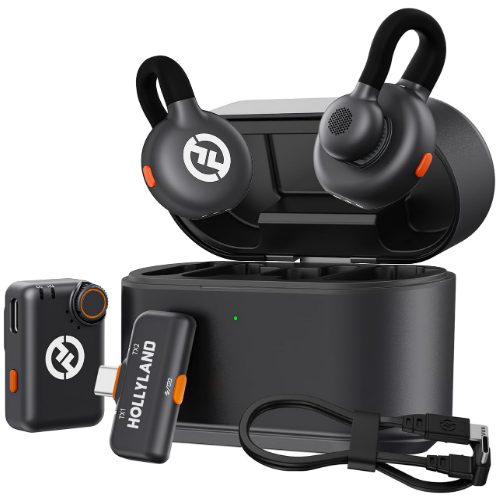
Hollyland LARK M2S – Wireless Clip-on Microphone
- 7g Lightweight, Titanium Clip, Discreet Design
- Clear sound with 24-bit/48kHz, 70dB SNR, 116dB SPL
- Noise Cancellation & 300m Long-Range Stability
- Works with Camera/iPhone/Android/Laptop
- Perfect for Content Creators, Online-Teaching, Streaming
$139
$159
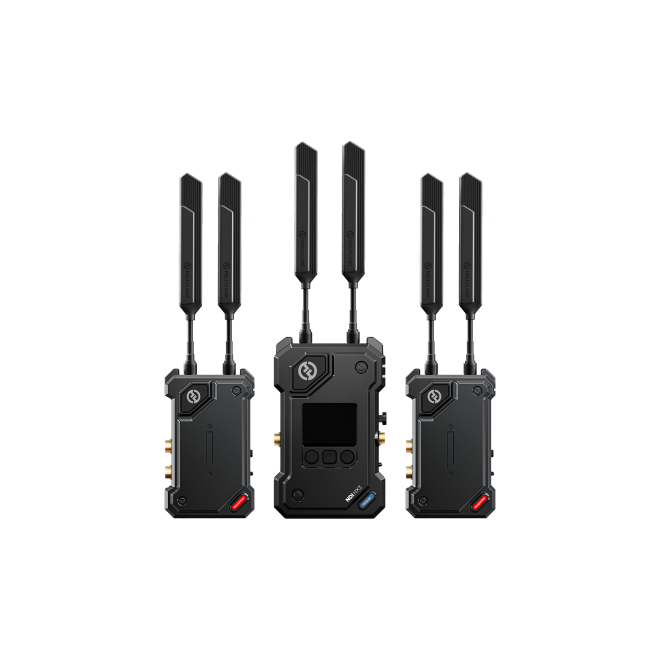
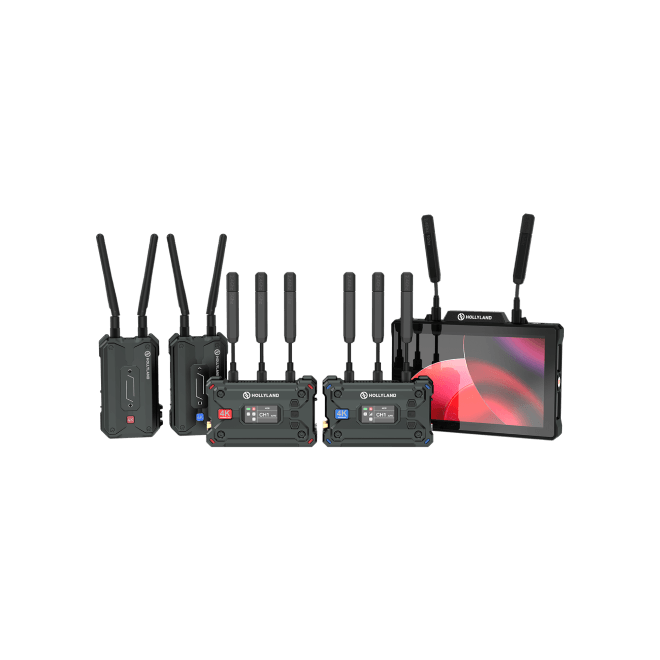
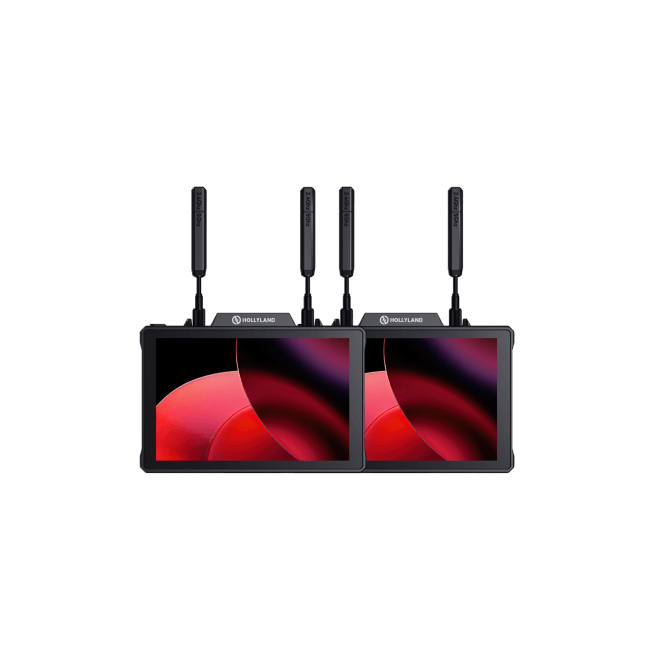
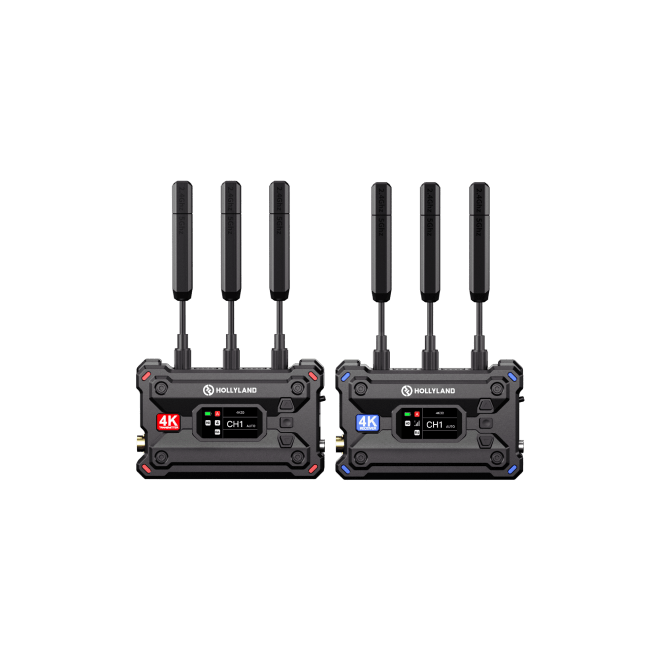
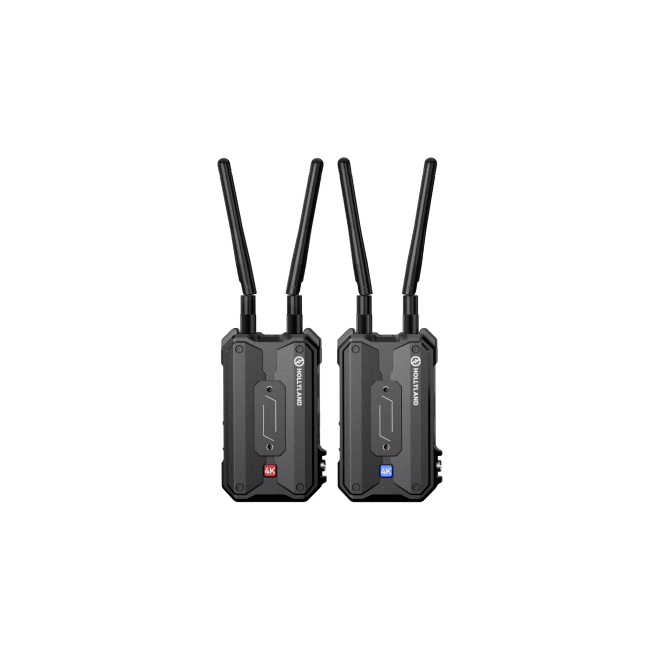
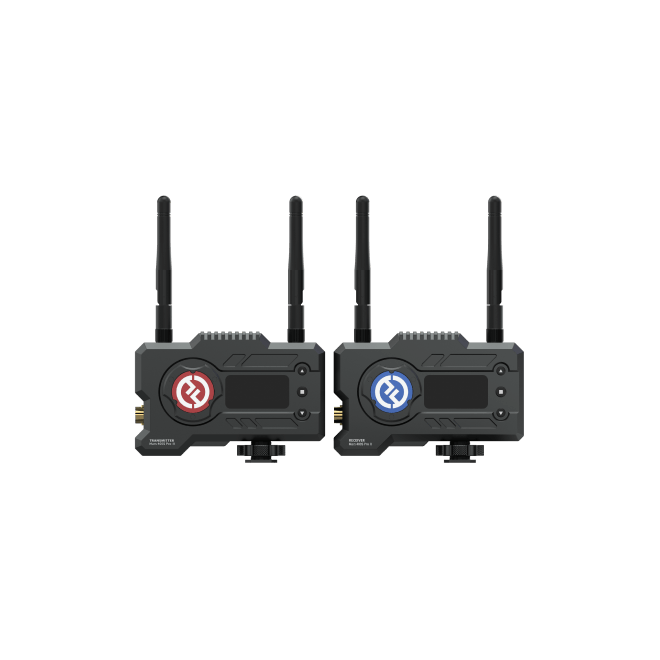
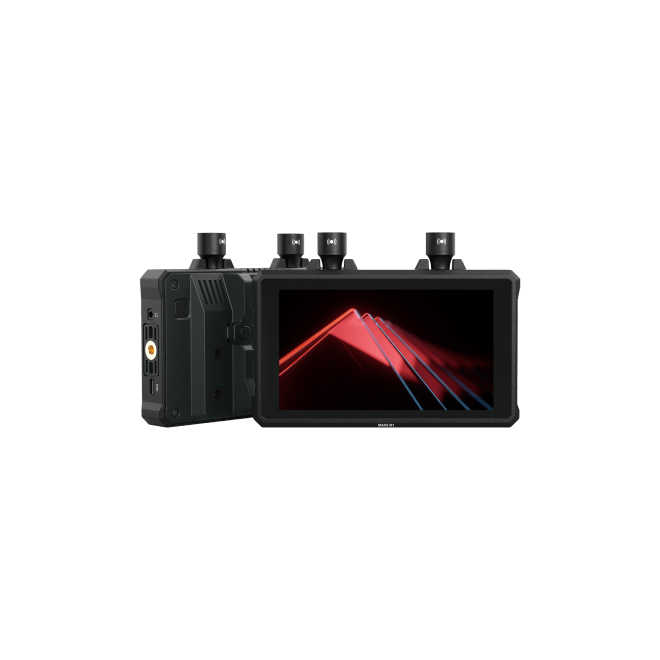
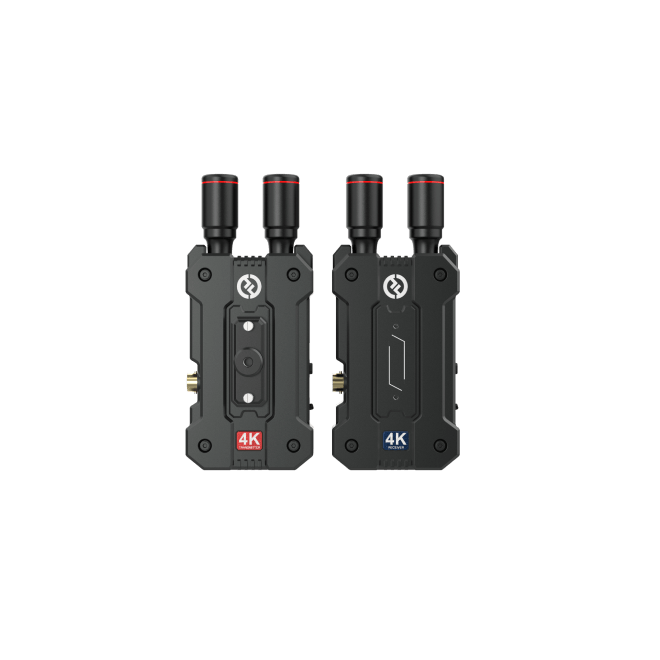
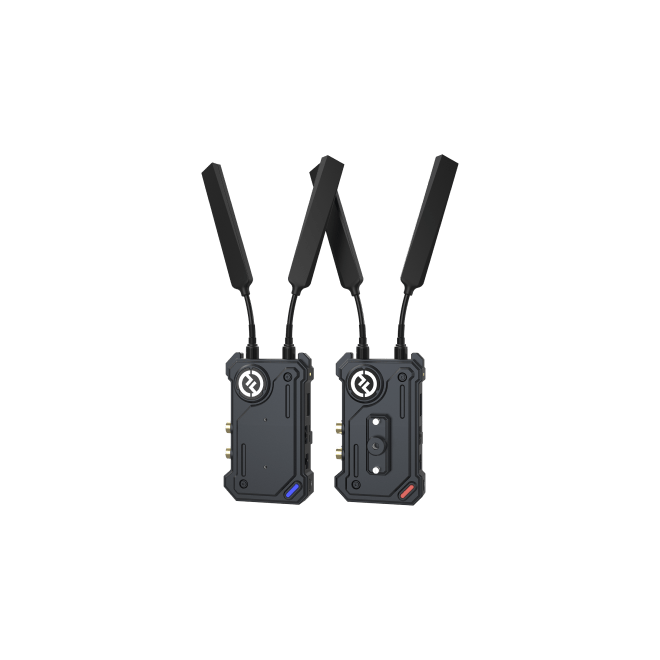
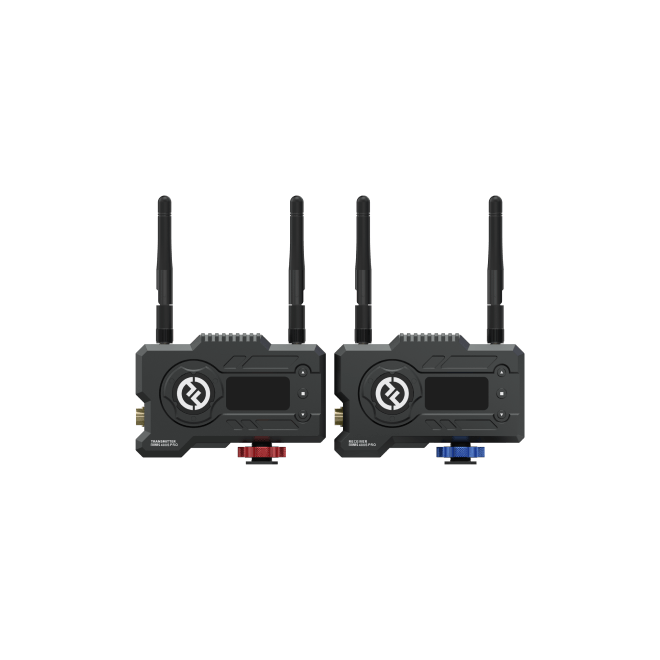
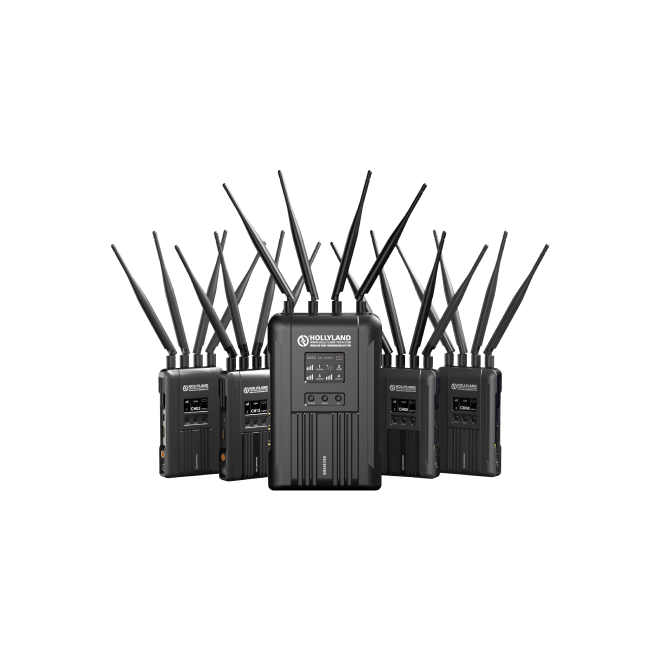

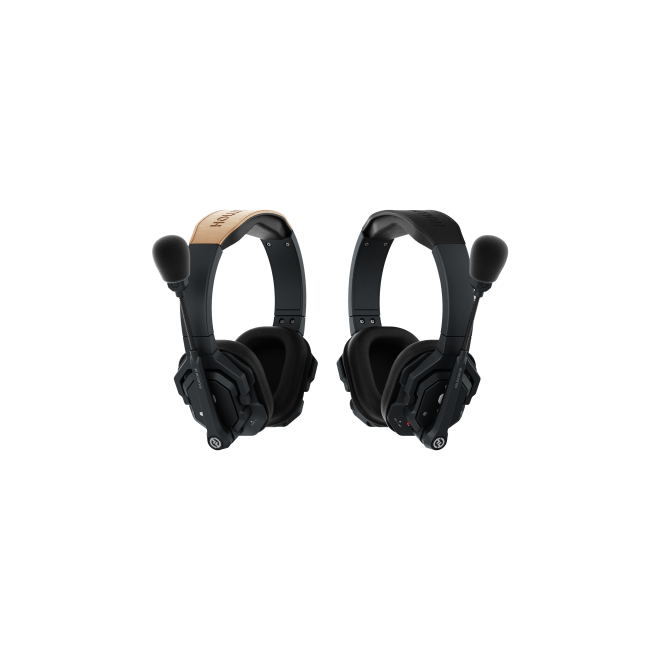

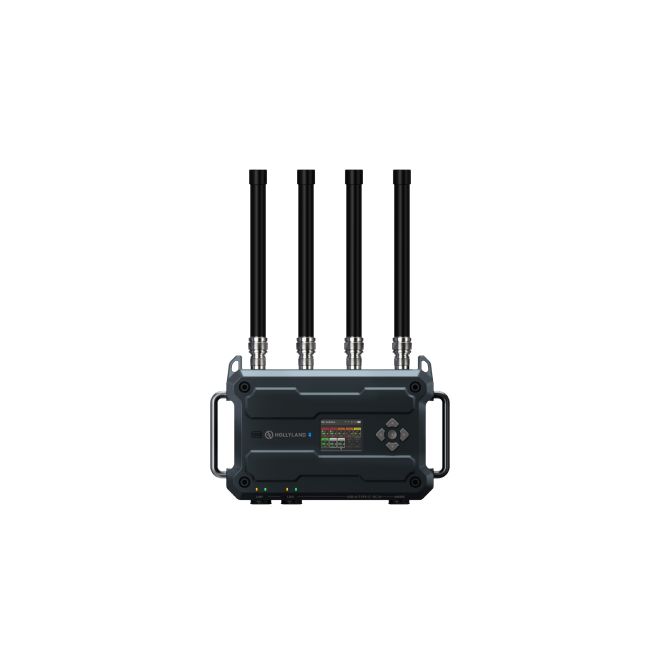
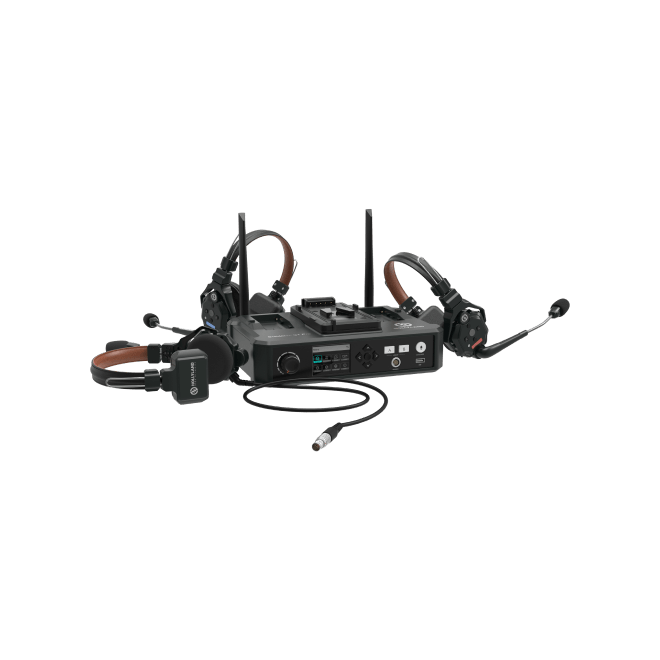
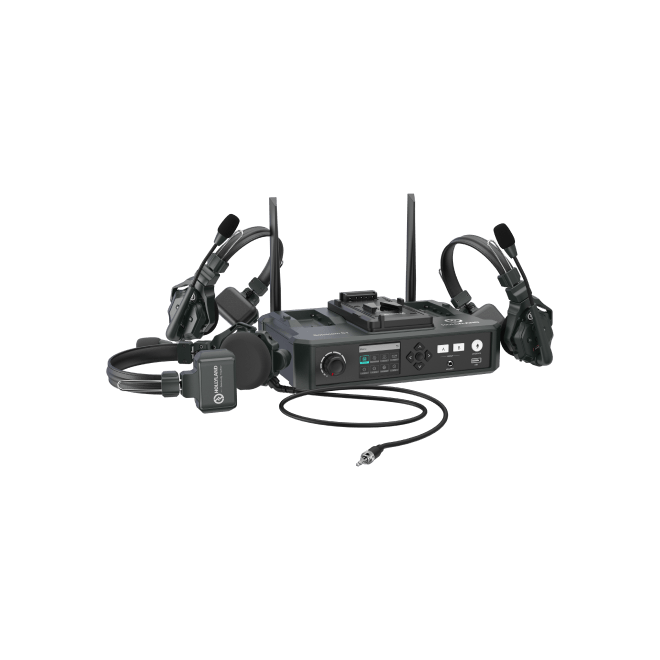
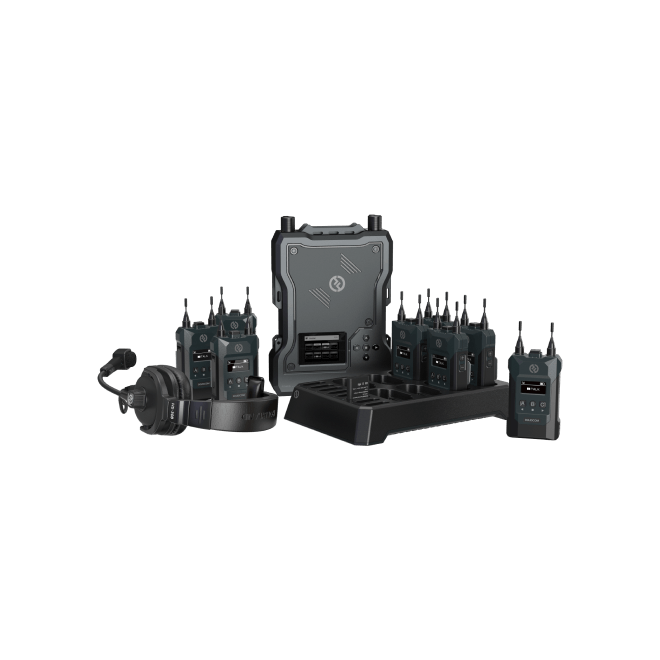
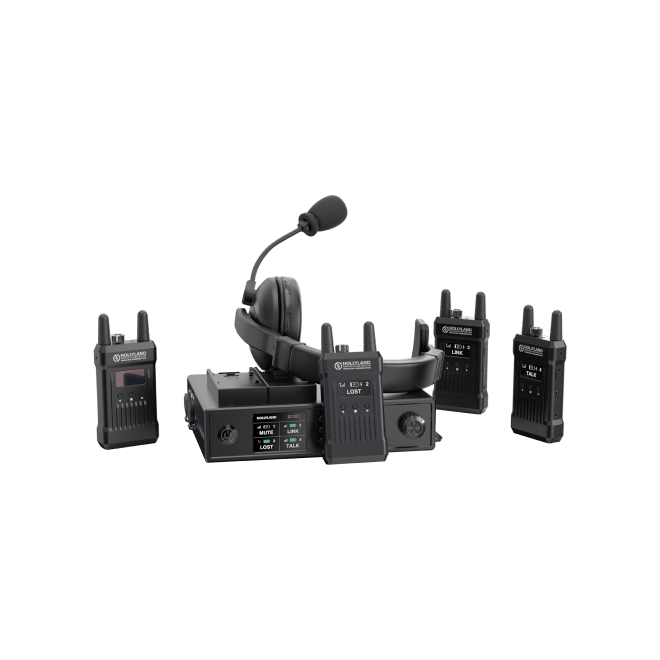
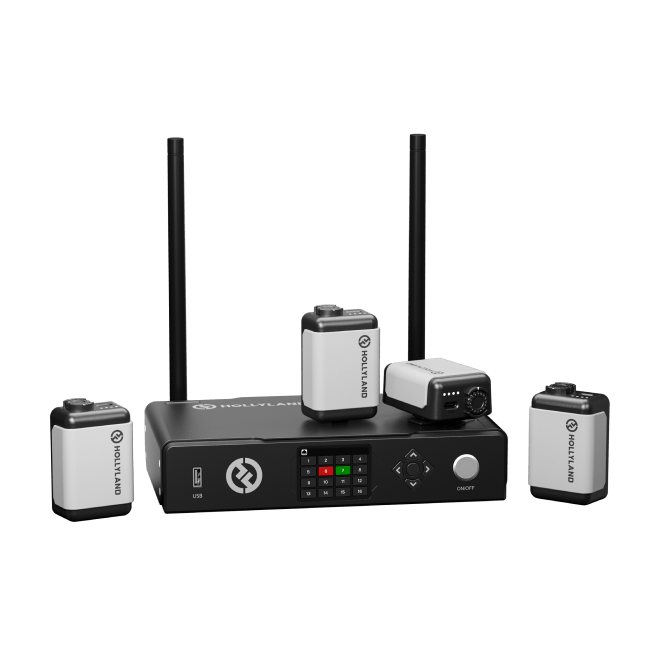
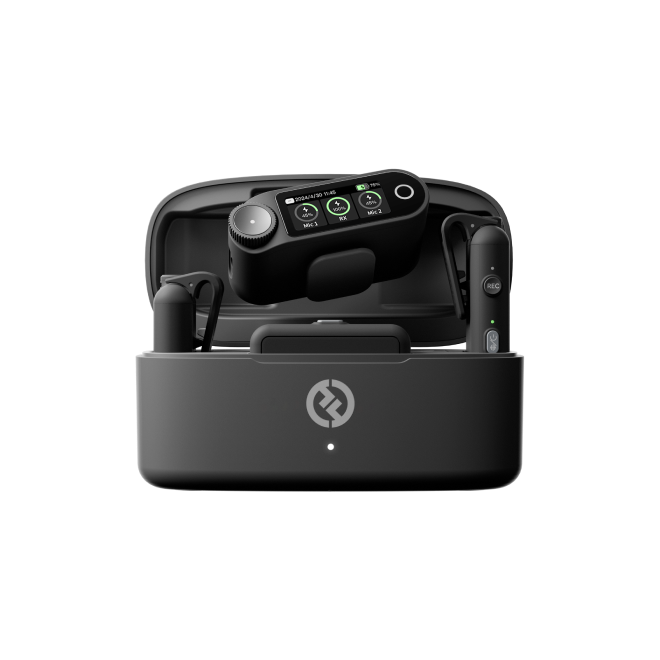
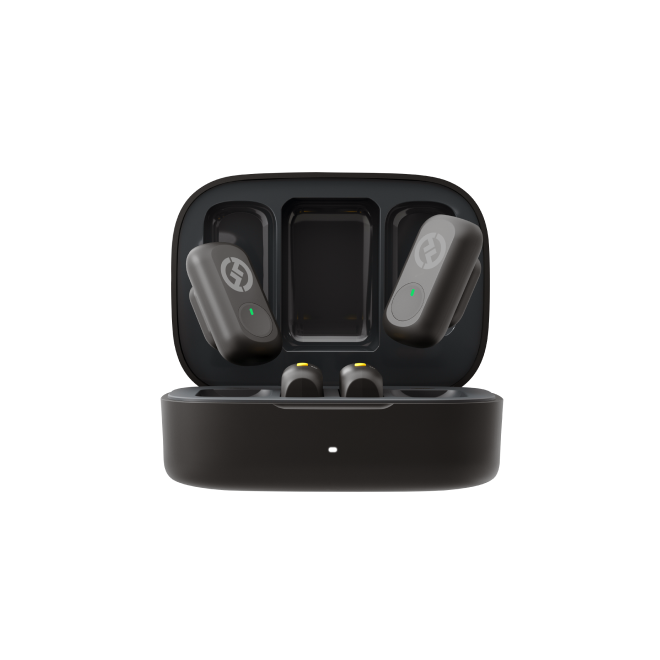

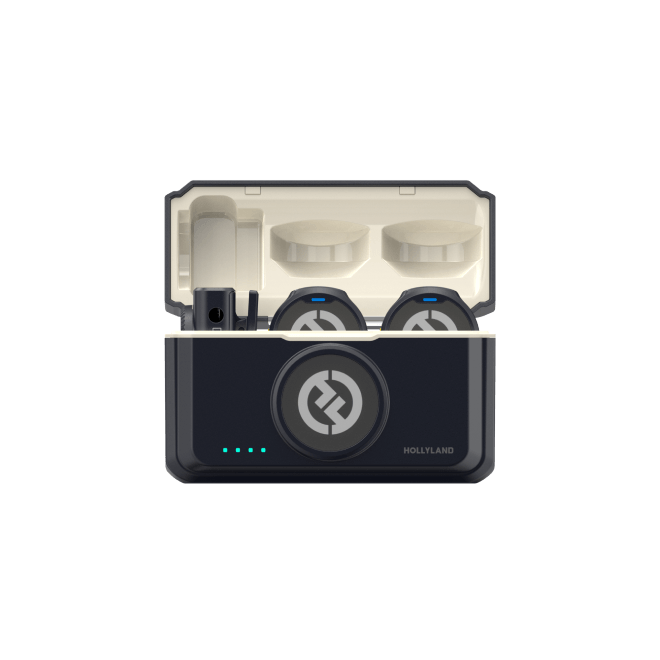
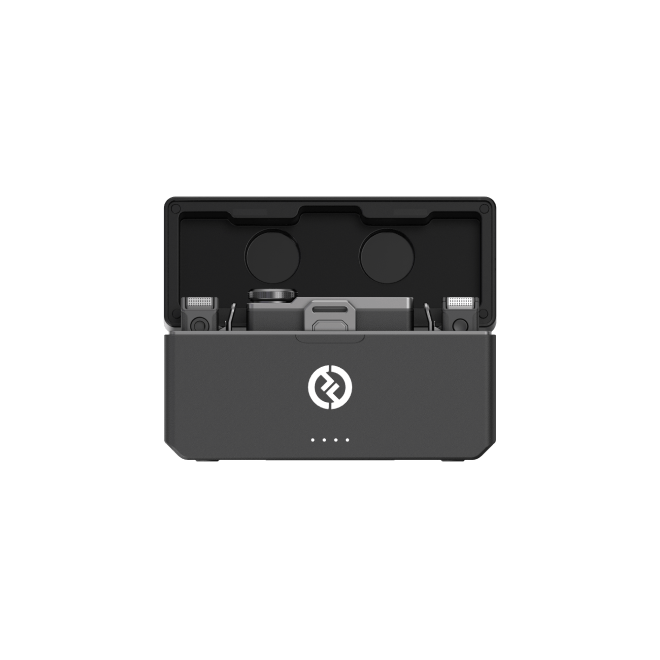
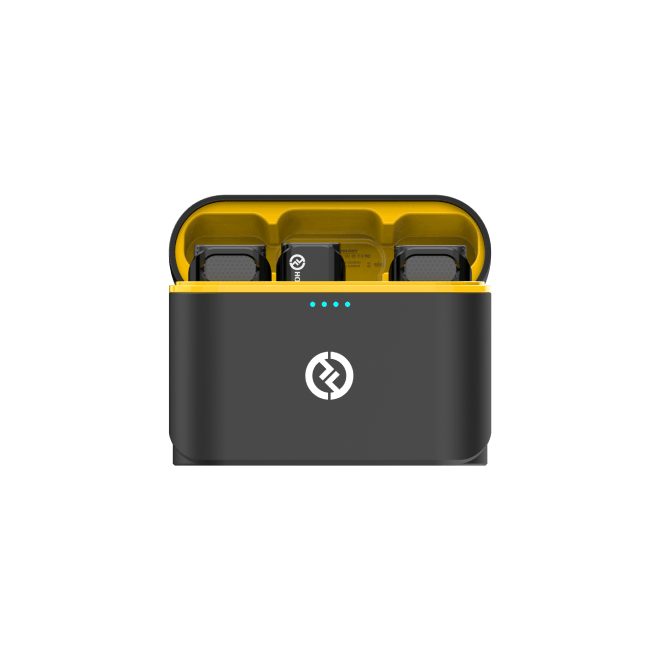
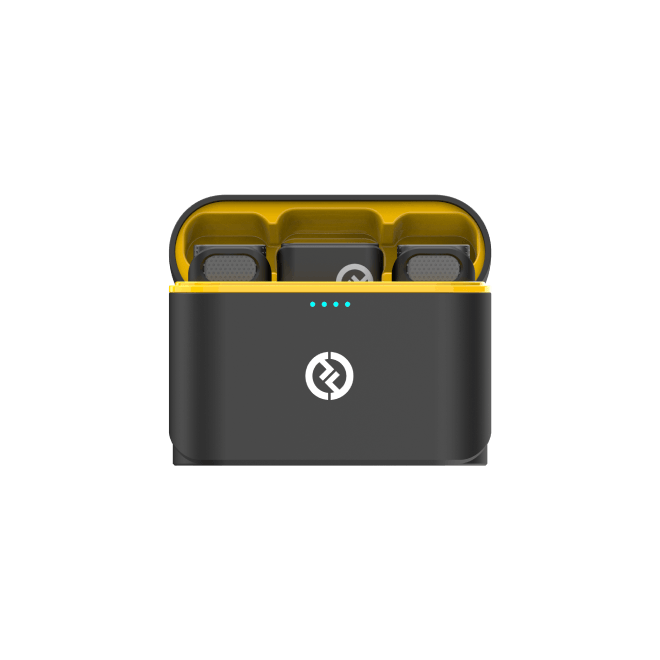
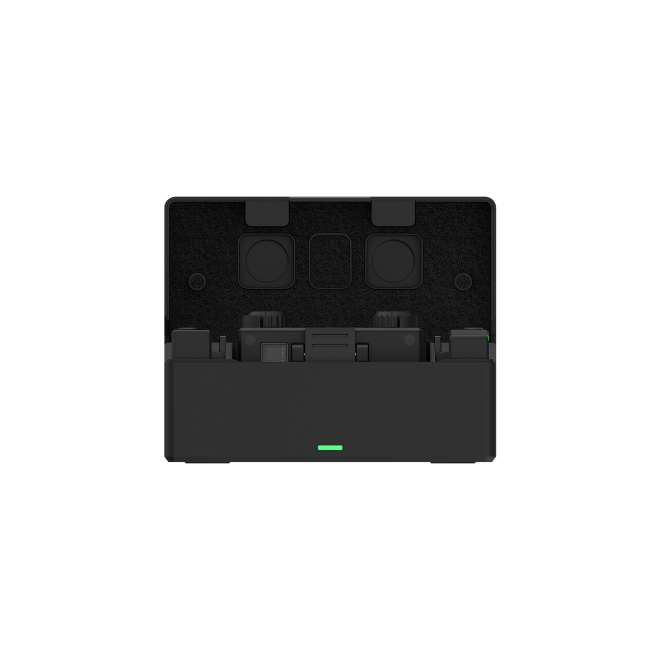
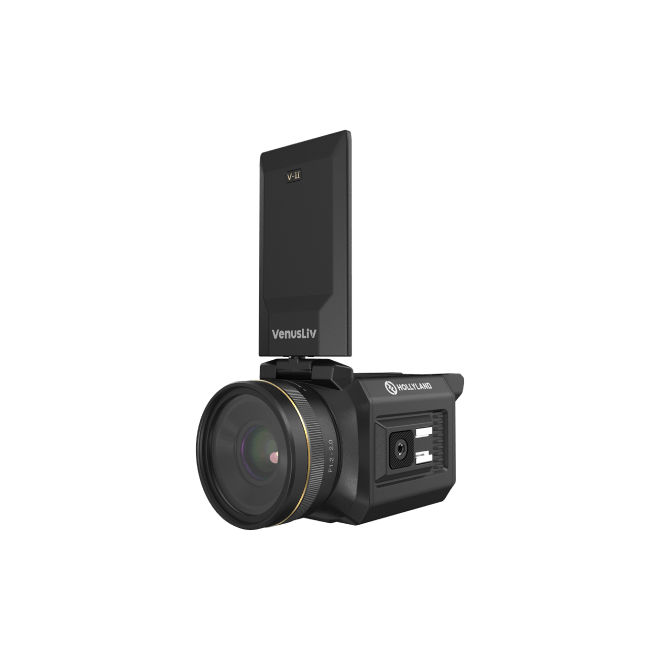
.png)


